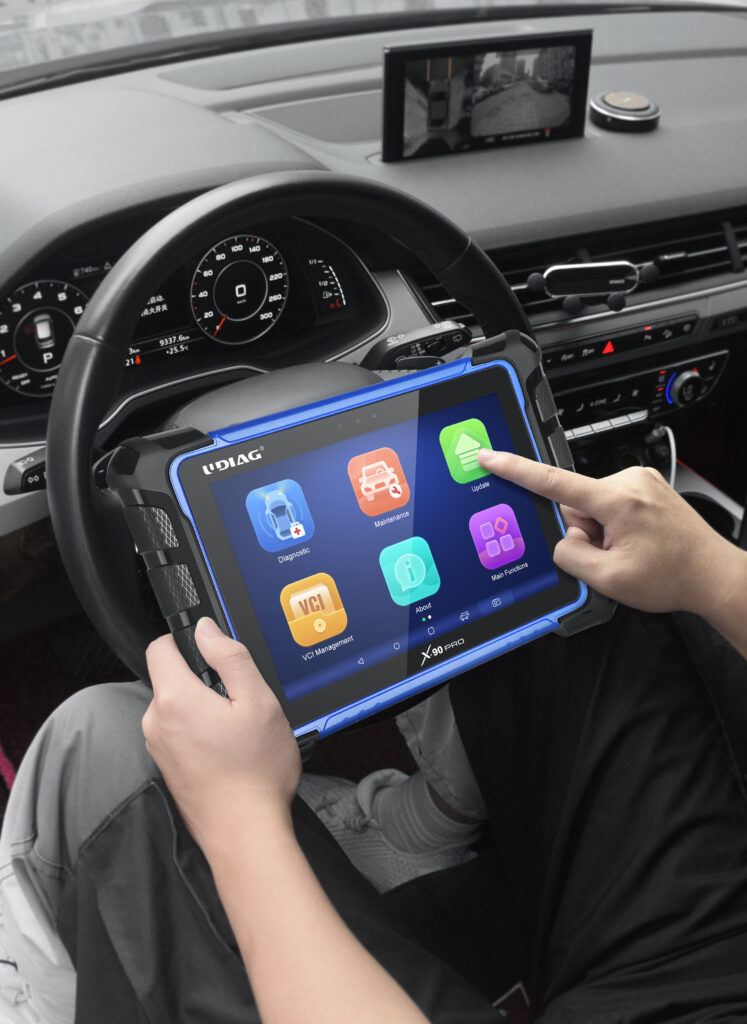Can diagnostic tablets access all the systems and modules in my vehicle?
2024-04-08 by UDIAG
In today’s digital age, automotive technology has advanced significantly, offering tools like diagnostic tablets that can help both mechanics and car enthusiasts understand and troubleshoot vehicle issues more efficiently. When it comes to diagnosing car problems, one common question arises: can diagnostic tablets access all the systems and modules in my vehicle? Let’s dive into this topic to understand the capabilities and limitations of diagnostic tablets.

I. Understanding Vehicle Systems and Modules
Modern vehicles are equipped with complex electronic systems and modules that control various aspects of vehicle operation. These systems include the engine, transmission, anti-lock braking system (ABS), airbags, electronic stability control, and more. Each system consists of numerous components and sensors that communicate with onboard computers.
II. What Can Diagnostic Tablets Access?
Diagnostic tablets are designed to communicate with a vehicle’s onboard computer systems through the OBD-II (On-Board Diagnostics) port. While diagnostic tablets vary in their capabilities depending on the model and manufacturer, they generally have the ability to access several key systems and modules within a vehicle.
- Engine System: Diagnostic tablets can read and clear engine fault codes, monitor engine performance parameters, and perform tests on various engine components.
- Transmission System: They can diagnose transmission issues, check transmission fluid levels, and reset transmission adaptations.
- ABS System: Diagnostic tablets can retrieve ABS fault codes, test ABS sensors, and reset ABS warning lights.
- Airbag System: They have the capability to diagnose airbag faults, clear airbag warning lights, and perform airbag system tests.
III. Types of Diagnostic Tablets
There are different types of diagnostic tablets available on the market, ranging from basic code readers to advanced diagnostic scanners and OEM-specific tools. Basic code readers provide essential functions like reading and clearing fault codes, while advanced scanners offer more comprehensive diagnostics and live data analysis.
IV. How Diagnostic Tablets Work
Diagnostic tablets work by establishing a connection with a vehicle’s OBD-II port, which is typically located under the dashboard. Once connected, the tablet communicates with the vehicle’s onboard computer to retrieve diagnostic information and provide real-time data. Users can then interpret this data to identify vehicle issues accurately.
V. Benefits of Using Diagnostic Tablets
The use of diagnostic tablets offers several advantages:
- Time Efficiency: Quickly pinpointing issues saves time during diagnosis and repair.
- Cost Savings: DIY troubleshooting can reduce trips to the mechanic and unnecessary repairs.
- Accuracy in Diagnosis: Detailed diagnostic data helps in making precise repair decisions.
VI. Limitations of Diagnostic Tablets
Although diagnostic tablets are powerful tools, they have limitations. Some tablets may not support all vehicle makes and models or may not have access to proprietary information from manufacturers.
VII. Choosing the Right Diagnostic Tablet
When selecting a diagnostic tablet, consider factors such as compatibility with your vehicle, features offered (like live data streaming), and ease of use. Opt for a tablet that suits your specific needs and skill level.
VIII. Tips for Using Diagnostic Tablets Effectively
To maximize the effectiveness of diagnostic tablets:
- Keep the tablet’s software updated to ensure compatibility with newer vehicles.
- Understand diagnostic trouble codes (DTCs) and their meanings.
- Follow manufacturer guidelines for using the diagnostic tablet on your vehicle.
IX. Future Trends in Vehicle Diagnostics
The field of vehicle diagnostics is constantly evolving. Future trends include enhanced wireless diagnostics, cloud-based diagnostics, and integration with AI for more intelligent fault analysis.
Conclusion
In conclusion, diagnostic tablets are powerful tools that can access various systems and modules within a vehicle, aiding in efficient diagnosis and repair. By understanding their capabilities and limitations, users can leverage these devices effectively to maintain and troubleshoot their vehicles.
Get Access Now: https://www.udiagtech.com
FAQs
1. Can a diagnostic tablet fix car problems?
Diagnostic tablets are primarily used for identifying vehicle issues and providing data for troubleshooting. They cannot physically repair car problems but aid in diagnosing them accurately.
2. How do I update my diagnostic tablet?
You can update your diagnostic tablet by connecting it to a computer with internet access and downloading the latest software updates from the manufacturer’s website.
3. Are diagnostic tablets user-friendly?
Many diagnostic tablets are designed with user-friendly interfaces and intuitive controls. However, some technical knowledge may be required for in-depth diagnostics.
4. Can diagnostic tablets be used on any car?
Most diagnostic tablets are compatible with vehicles that have an OBD-II port (typically cars manufactured after 1996 in the US). However, compatibility can vary based on the tablet’s specifications.
5. What’s the difference between OBD1 and OBD2?
OBD1 systems were early onboard diagnostics used primarily by automakers in the 1980s and early 1990s. OBD2 is a standardized system introduced in the mid-1990s, offering more comprehensive diagnostic capabilities and uniformity across vehicle brands.


